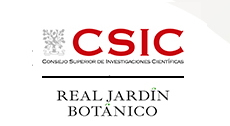Scientific Area
Abstract Detail
Nº613/514 - Predicting future distribution of an ecoregional invasive species pool with habitat suitability and dispersal modeling techniques
Format: ORAL
Authors
Adrin Lzaro-Lobo1, Borja Jimnez-Alfaro1
Affiliations
1 Biodiversity Research Institute IMIB (Univ.Oviedo-CSIC-Princ.Asturias), Mieres, Spain
Abstract
Biological invasions are causing massive ecological, social, and economic impacts worldwide. Understanding the ecological factors that affect the regeneration of invasive plants is critical to improving action plans that limit the establishment and dispersal of such species. In this study we combine Species Distribution Models (SDMs) with greenhouse experiments to evaluate the regeneration niche of the plant invasive species pool at the regional scale. The central hypothesis is that plant niche, both realized (i.e., current distribution) and potential (i.e., based on dispersal and regeneration), is highly influenced by ecosystem characteristics and plant traits. As the study system, we use the Atlantic region of NW Iberian Peninsula, an ecoregion with high biodiversity value and optimal conditions for the spread of invasive plants in Europe. With a combination of local literature, expert knowledge, and evidence from scientists and managers, we created a complete list of invasive plant species in the ecoregion (~170 species). We used a hierarchical SDM approach to analyze how environmental predictors affected habitat suitability for each species. Using occurrence and environmental data from European and global databases, we found that climatic and soil variables were good predictors of habitat suitability. To evaluate the potential regeneration niche, we combined the habitat suitability estimates for each species with extensions of SDMs implementing dispersal constraints into species projections. Dispersal limitation was approached by estimating geographical barriers, dispersal kernel, and frequency of long-distance dispersal events. We found that dispersal rates across the study ecoregion were species-specific and dependent on species ecological requirements and dispersal potential. Lastly, we conducted greenhouse experiments with the most successful invasive species to evaluate the effect of temperature, water availability, and plant traits on plant regeneration. We found the ecological thresholds for germination and early growth, as well as positive maternal effects on offspring performance.




